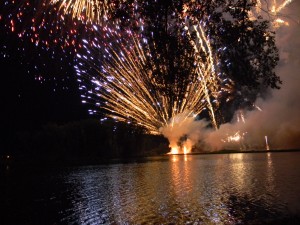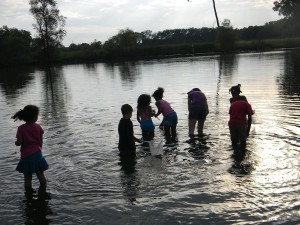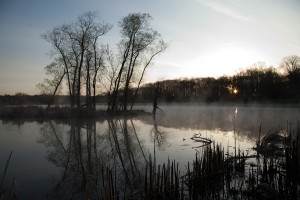The Madison Common Council has approved a $25,000 appropriation to study the effects of Rhythm and Booms on Warner Park. This year, 2012, will be the fireworks’ 20th year in Warner. But new concerns have been raised about the pollution dumped into Warner’s wetland.
The city’s Committee on the Environment asked for the study, and Alder Anita Weier, whose district borders on Warner, introduced the appropriation.
Additional funds are being sought to properly sample the water, sediment, ground and plants. Wild Warner supports these efforts, and submitted the following letter to the state Department of Natural Resources:
Wild Warner, a nonprofit advocacy group in north Madison, strongly supports the city of Madison’s application for a small Lakes Grant.
The grant will supplement a Common Council appropriation of $25,000 to study the wetland and lagoon in Warner Park for contaminates, including heavy metals deposited during 19 years of Rhythm & Booms fireworks. No one knows what contaminates exist, if any, in the sediment, water, plants, fish and other wildlife or soil of this public park and designated wetland. Nor has anyone adequately looked at the impact of the fireworks on public health, including tens of thousands who witness the fireworks close up, and the adults and children who fish in Warner and its outlet in Lake Mendota.
Here is what we do know:
The annual city-sponsored fireworks display of 13,000 shells litters the ground, water and wetland with hundreds of pounds of paper and cardboard shell debris, unburned fuses, plastic containers and ropes that connect various rocket stages. Our group has collected a fraction of this debris, and has photos on our Web site blog here. This does not include the heavy metals that give those fireworks those great colors.
 The only study of the fireworks was poorly done and tested only the water. It showed a flush of chemicals that “disappeared.” They either drained into the lake, or sank into the sediment. The city/county health department suggests that they became bound up in the sediment, and has now warned that the children in our nature programs should not come in contact with this sediment — and if they do — to wash their hands immediately.
The only study of the fireworks was poorly done and tested only the water. It showed a flush of chemicals that “disappeared.” They either drained into the lake, or sank into the sediment. The city/county health department suggests that they became bound up in the sediment, and has now warned that the children in our nature programs should not come in contact with this sediment — and if they do — to wash their hands immediately.
The “shooting island” is contaminated with carbonized residue of unknown composition. Every year truckloads of sand are brought in to bunker the firework mortars. This soil, in the middle of the lagoon, is left to slough and seep into the wetland.
We know that a growing body of scientific literature shows that fireworks debris is harmful. We know that clean water is key to health of the park, its critters and its human users. We know that many citizens, including people of color, fish at the outlet of Warner Park for fish to eat. We know that the Yahara Fishing Club annually holds a fishing day for children in the Warner lagoon. And we know that DNR wants to restore the wetland/lagoon to the point that it can once again be a recreation fishery, and possibly contribute to the resurrection of species in Mendota.
Wild Warner exists to protect Warner Park’s natural areas and its diverse wildlife, including 115 species of birds. The Lakes Grant will supplement the city appropriation to allow a more detailed sampling to establish a baseline chemical analysis. We have asked for additional sampling immediately after the 2012 fireworks scheduled June 30, to measure perchlorates, and the level of chemical/metal spiking. 
The results of this study will inform four important constituencies and events:
1) A new city master plan for Warner Park to be done this year. At the heart of this study is the conflict between development and preservation.
2) DNR and its plans to improve the fishery. Any decision to dredge or disturb the sediment should understand its quality. DNR plans to sample fish for possible contamination.
3) The city of Madison’s decision whether to continue fireworks in Warner, or into any other public water or wetland.
4) The citizens who use this park, who drink water from groundwater in aquifers below the lagoon, who fish its waters, and who expect and deserve safe and clean water.
You must be logged in to post a comment.